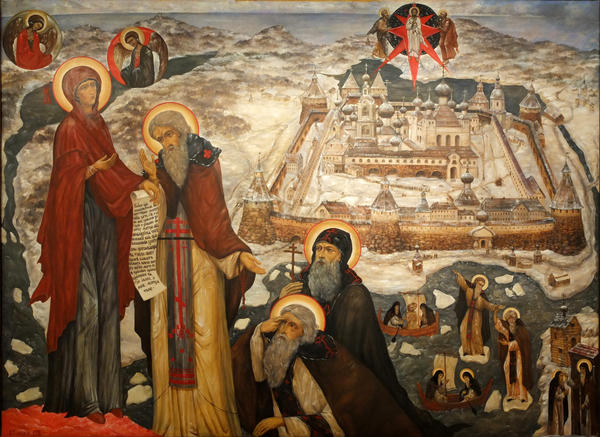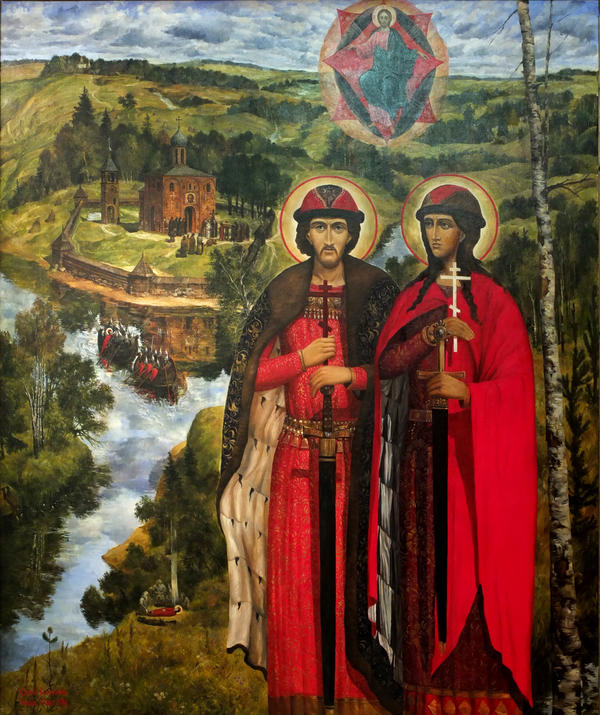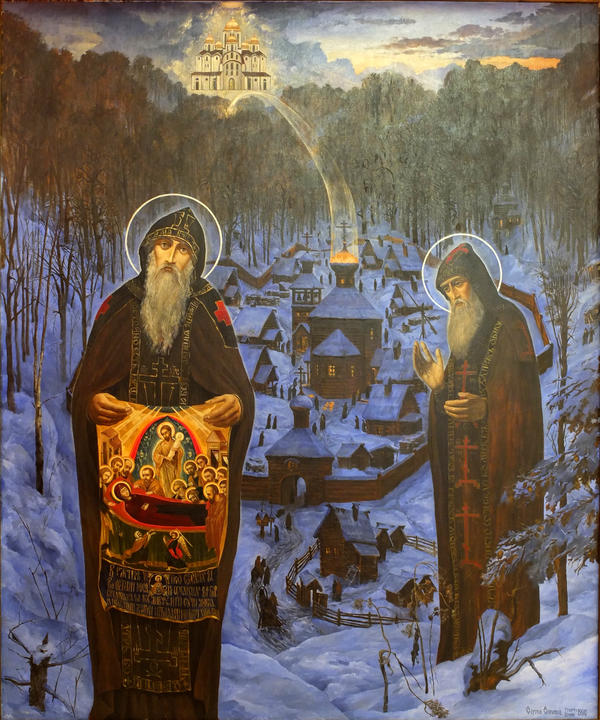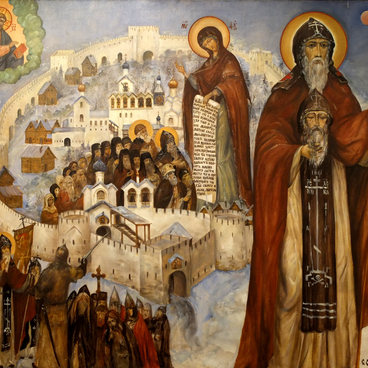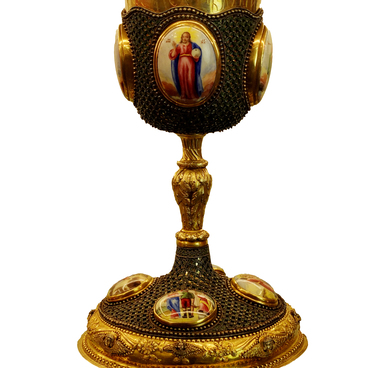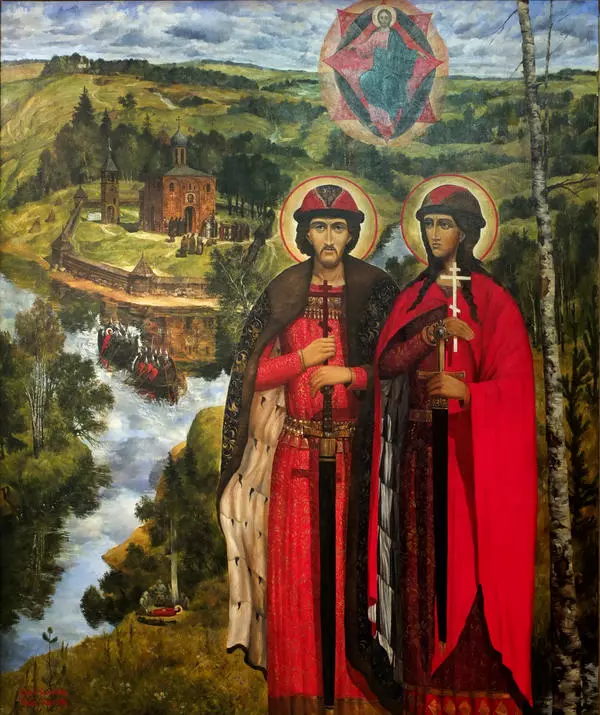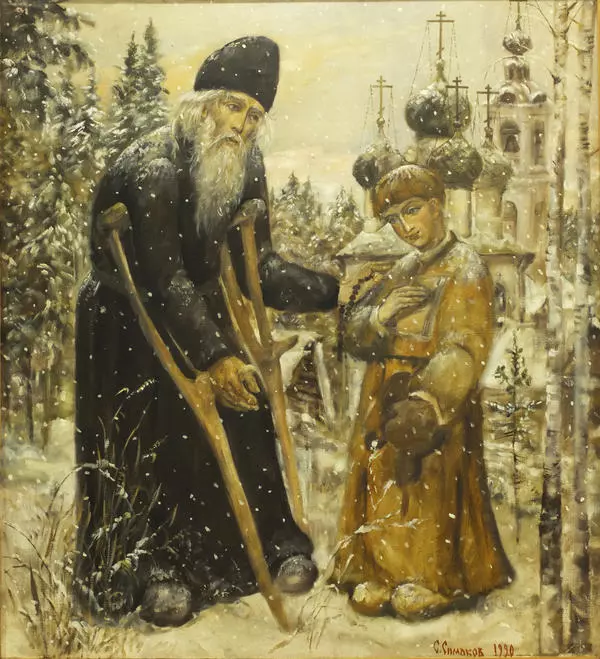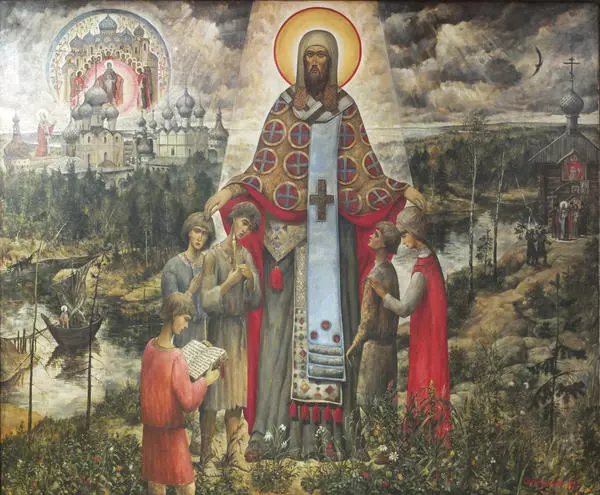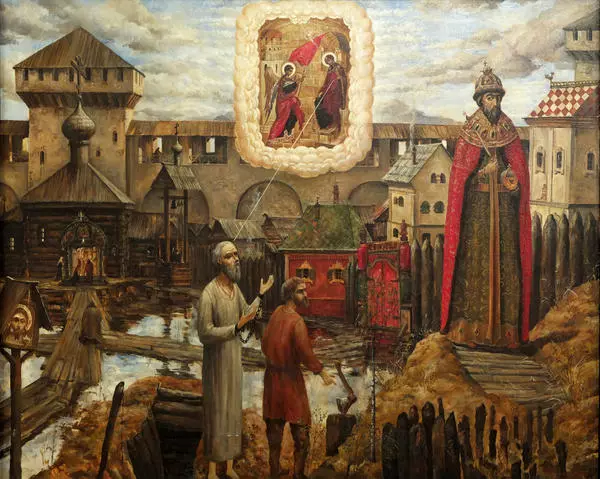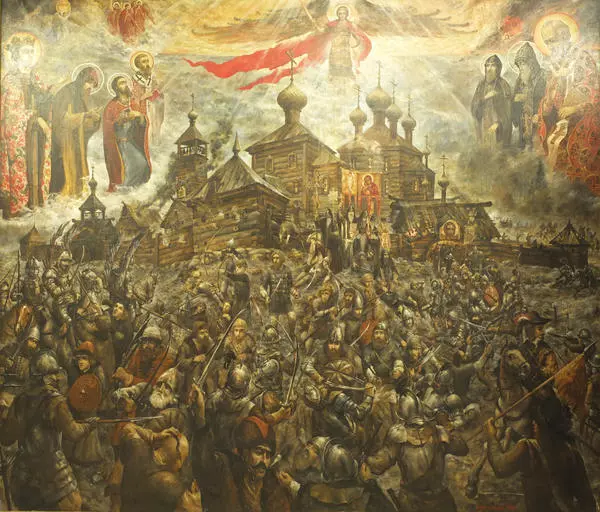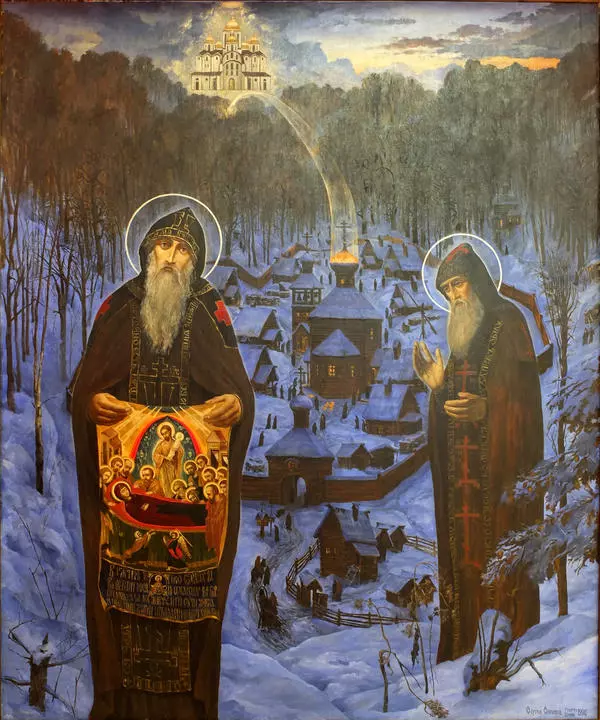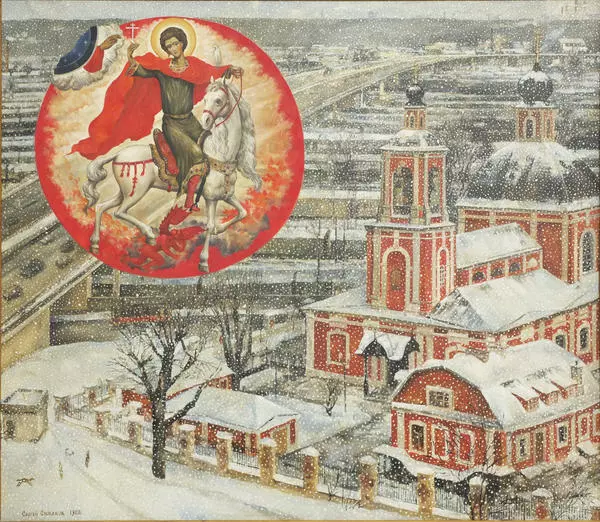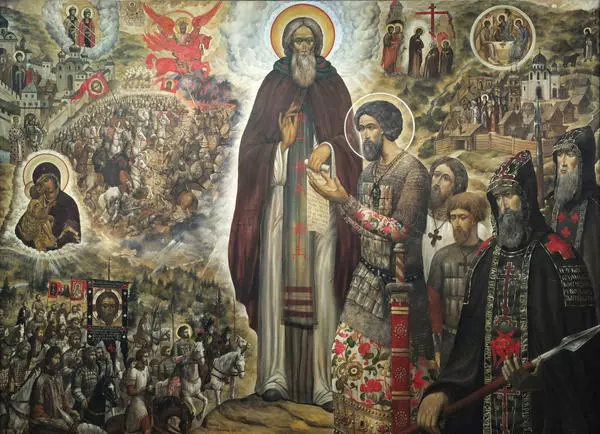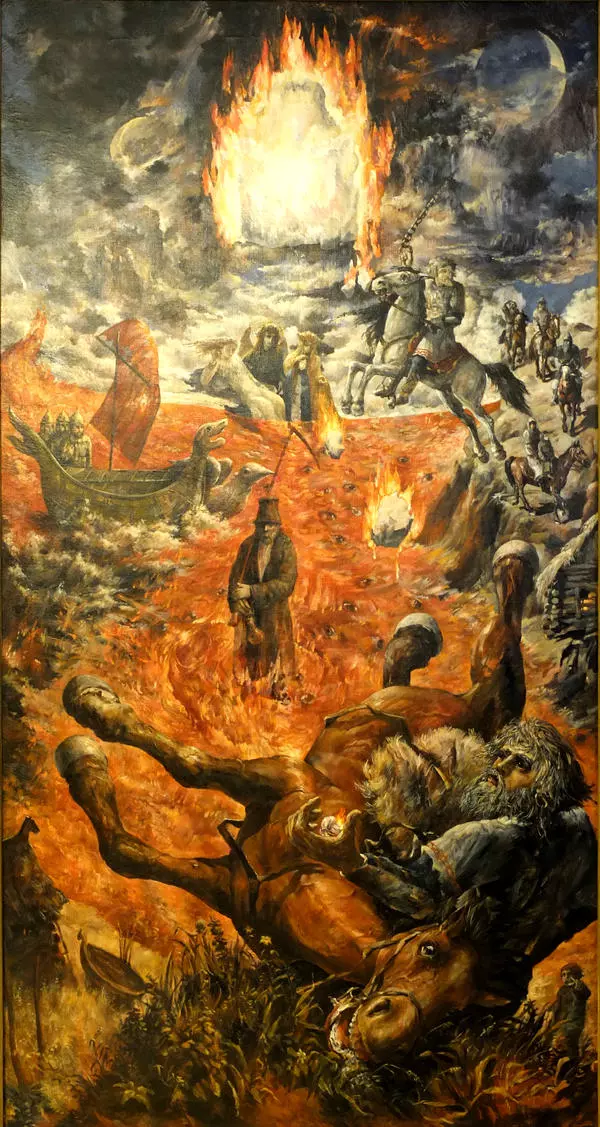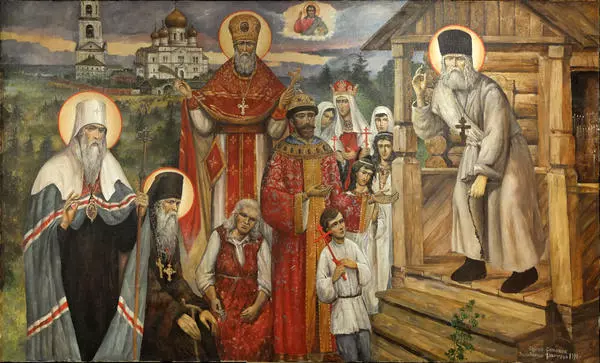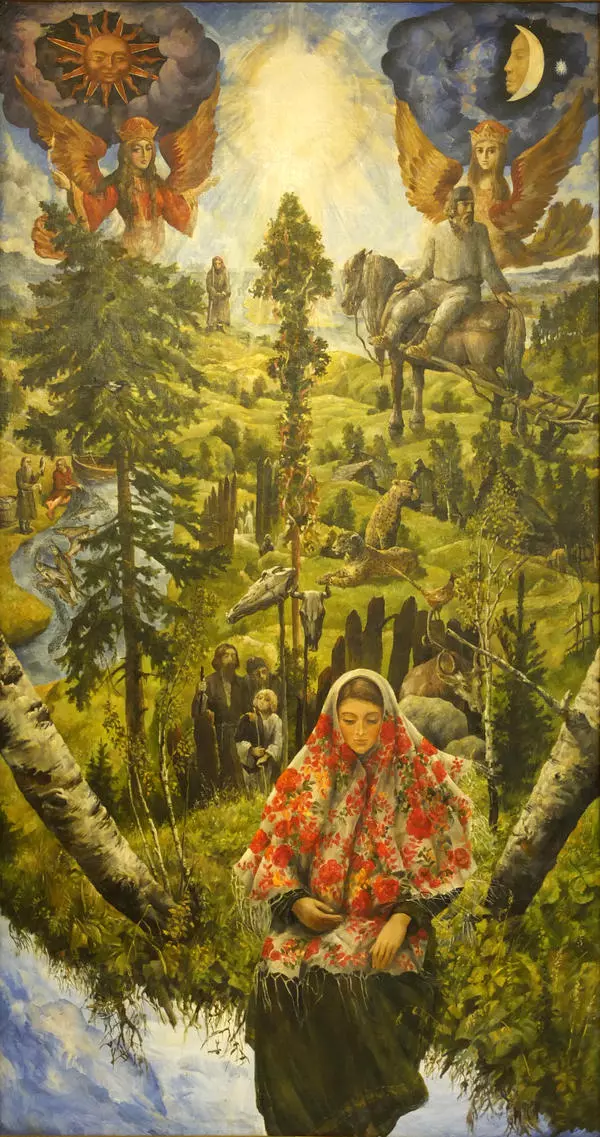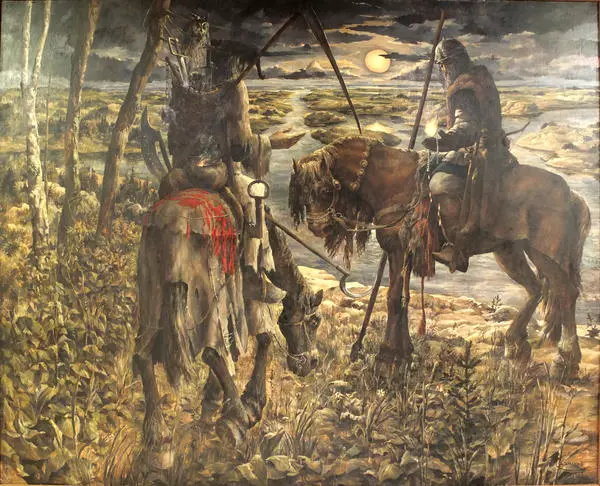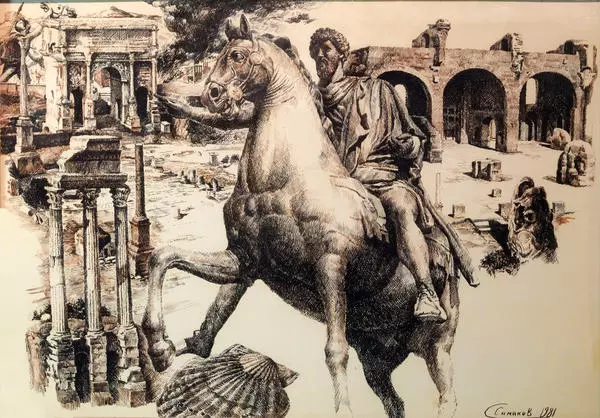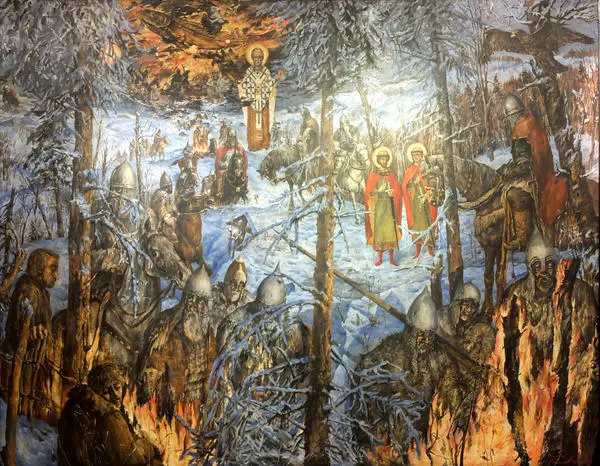Sergey Simakov depicted the founders of the Solovetsky Monastery in the picture Saints Zosimas, Sabbatius and Herman of Solovki. The monastery is a remote retreat in the north of Russia on the Solovetsky island in the White Sea. In accordance with the Lives of the Saints, Sabbatius was widely known among the monks and laity for his gentleness and austere life style in Kirillo-Belozerskiy Monastery. Excessive attention weighed heavily upon him. Sabbatius first moved to the Valaam Monastery, and then, together with another monk by the name of Herman, he founded a settlement on the Solovetsky island by the Sekirnaya mount. In 1436, one year after the death of Sabbatius, Herman, hermit Zosimas and the other monks from the settlement laid the foundation of Solovetsky Monastery.
Saints Zosimas, Sabbatius and Herman of Solovki
Время создания
1991
Размер
150x200 cm
Техника
Canvas, oil
Коллекция
Выставка
#1
Simakov S.B.
Saints Zosimas, Sabbatius and Herman of Solovki
#2
#3
The Solovetsky Monastery.
Source: wikipedia.org
#4
The Theotokos (Holy Mother of God) is portrayed on the left, blessed Zosimas is standing by her side — he was chosen to become Father Superior of the Solovetsky Monastery. Blessed Sabbatius and Herman, holding the cross, are kneeling behind him. Scenes from the lives of the Saints are presented on the right side of the picture, they represent the miracles of the Saints on the Sea and the setting up of the first wooden monastic cells on the Solovetsky islands. Sergey Simakov turned to the traditions of Russian icon painting, presenting the large figures of the Saints, surrounded by miniature descriptions of the scenes from their lives. A similar composition was used in the hagiographical images. For example, the icon of the second half of the 16th century depicts the figures of Zosimas and Sabbatius surrounded by 56 scenes from their lives.
The artist combines two descriptive traditions in his picture — the icon-based tradition and realism. He gives a realistic description of the architectural design of the monastery, the lake by its walls, the vast expanse of water in the upper part of the picture. The dark green body of water with white whorls in the forefront reflects the icon–based pictorial tradition. Thus, Simakov delineates the earthly and the divine.The artist combines two descriptive traditions in his picture — the icon-based tradition and realism. He gives a realistic description of the architectural design of the monastery, the lake by its walls, the vast expanse of water in the upper part of the picture. The dark green body of water with white whorls in the forefront reflects the icon–based pictorial tradition. Thus, Simakov delineates the earthly and the divine.
In his early works the artist often contrasted the iconical portrayal of the Saints and the realistic depiction of the landscape. This can be seen in the following pictures: Boris and Gleb, The Town (Grad) of Moscow, Saints Antonius and Theodosius of the Kiev Caves.In his early works the artist often contrasted the iconical portrayal of the Saints and the realistic depiction of the landscape. This can be seen in the following pictures: Boris and Gleb, The Town (Grad) of Moscow, Saints Antonius and Theodosius of the Kiev Caves.
#5
Sergey Simakov, Boris and Gleb1986
Source: Saints Zosimas, Sabbatius and Herman of Solovki
#6
Sergey Simakov, The Town (Grad) of Moscow, 1987
Source: Saints Zosimas, Sabbatius and Herman of Solovki
#7
Sergey Simakov, ‘Saints Antonius and Theodosius of the Kiev Caves’ 1986
Source: Saints Zosimas, Sabbatius and Herman of Solovki
#8
Saints Zosimas, Sabbatius and Herman of Solovki became the artist’s last picture. In 1991 he took the vows and, from there on, he painted only icons. He served in the Uglich Church of Archangel Michael (the church in the forest), after the death of his wife, Elena, he became Father Superior and took the name of Raphael.
#9
Yaroslavl Museum Reserve, Uglich State Historical, Architectural and Art Museum
читать дальшескрыть
00:00
00:00
1x
Saints Zosimas, Sabbatius and Herman of Solovki
Время создания
1991
Размер
150x200 cm
Техника
Canvas, oil
Коллекция
Выставка
Открыть в приложении
Поделиться

